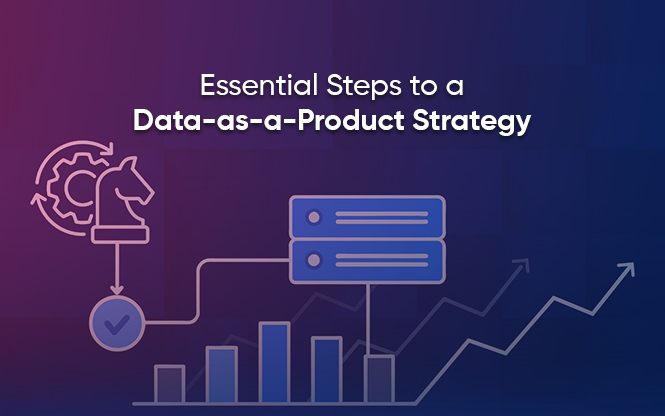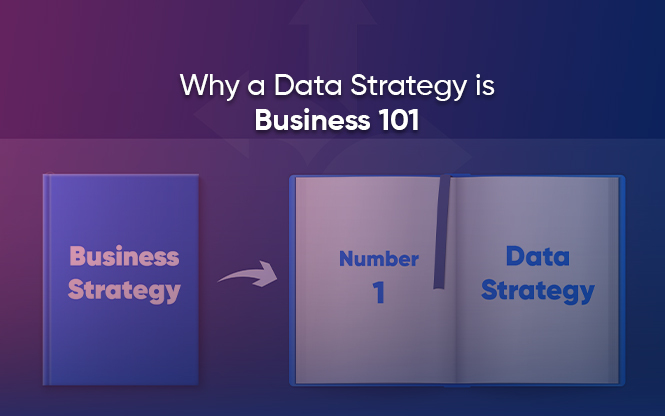
By the time you’re done reading this post, human activity on the web and across devices will generate 27.3 million terabytes of data.
According to Bernard Marr, author of Data Strategy, in the 21st century, “every business is a data business.”
What information do you want to collect? Where are you going to store the information? How will you keep the information secure? How are you going to use the data for better business intelligence?
These leading questions will formulate concrete answers in your data strategy.
Whether you’re a small business owner on Instagram or a retail giant like Walmart, Marr says that “…it doesn’t matter how much data you have, it’s whether you use it successfully that counts.”
We know what you’re thinking…
Do I Really Need a Data Strategy?
In short, yes. A company without a data strategy is like a tourist in a foreign country without GPS.
- By 2025, global data creation is projected to grow to 180 zettabytes. (That’s about 60 million times more than the size of Netflix’s catalog.)
- FACT: Data-driven companies are 23 times more likely to acquire customers, six times more likely to keep them, and 19 times more likely to be profitable. (McKinsey Global Institute)
- Consider this — In 2022, MGM Resorts International partnered with a data analytics company, and with the new, structured information, increased its annual revenue by $2.4M.
David Redi, Sales Director at VEM Tooling, told me how his company’s data strategy acts “…as a compass…for data to be a strategic asset of the organization, enabling us to make informed decisions with optimal outcomes in the long-term.”
Data Strategy Definition
We use goals, plans, approaches, and strategies at work every day. What’s the difference?
A plan is a set of steps to achieve a goal.
A strategy is a specific type of plan: how you’re going to gain an edge over someone else. This is done, both, through exploiting your competitors’ weaknesses and capitalizing on your strengths.
A data strategy, therefore, is a long-term guiding plan – your company’s blueprint that defines the processes, people, and technologies you need to support your data challenges and fulfill your business objectives.
And there’s one thing that every good strategy needs: an enemy to work against.
In business, this is your competition. But there can be other forces too. (Netflix’s competition is Amazon Prime and HBO, but they’re also fighting with our sleep.)
Benefits of a Strong Data Management Plan
A data strategy fulfills three core functions for a business: improving decision-making, optimizing operations, and monetizing data.
And to leverage this data effectively and efficiently, you need a roadmap of the journey ahead — a proprietary data strategy.

What’s in The Box? 3 Pillars of a Winning Data Strategy
There are three foundational pillars of a successful data strategy: your company’s goals and objectives, procedures and practices for how your team will interact with the data, and the challenges and opportunities your team faces when it comes to culture.

Let’s explore these three pillars in more depth, shall we?
I. Goals and Objectives
Data Analytics
The use cases and targets for data analytics initiatives must be closely aligned with specific, high-value business objectives. If not, then it’s just data for the sake of data.
First, you must answer two questions:
- What are your company’s business objectives?
- How will you use data to fulfill these objectives?
For this, your data strategy must be aligned with your overall business strategy.
I talked to Mimi Nguyen by email, Founder of Cafely, a Vietnamese coffee company, and she says her data strategy focuses on:
- Customer Insights: “We track customer behavior on our website, social media, and through surveys to understand their preferences, buying habits, and coffee preferences. This allows us to tailor our offerings and messaging to resonate with specific demographics.”
- Sales and Inventory Management: “…analyze sales trends, predict demand, and optimize inventory levels. This minimizes stockouts and ensures we have the right blends available when customers want them.”
- Performance Measurement: “…track the effectiveness of our marketing efforts, measure the success of new product launches, and gauge overall customer satisfaction…allows us to continuously improve our performance.”
II. Procedures and Practices
Data Governance
Did you know you only have 40 seconds in archery to shoot an arrow? Just like games, a robust data management plan has company-specific and context-rich rules. A data governance framework, therefore, is a rulebook that outlines the internal policies to dictate how data will be handled within your organization, and by whom.
Uber’s data governance strategy is touted as fail-proof, for example. With operations in 70 countries and 10,000 cities, three approaches to data governance have helped them: flexible engineering, staying current with policies, and iterating on their existing framework.
Data Architecture

An organization’s data architecture determines how data will flow through its systems and processes.
Imagine it as the architecture of a house. This architecture explains where different data storage facilities (databases, data lakes, warehouses) will be situated. The “pipes” (data integration tools, ETL processes) let data flow between these storage areas.
Finally, it determines “entryways” (BI tools, analytics platforms) to access and analyze the data.
Data Integration
Social media, SaaS applications, IoT devices, customer surveys. These are just some sources of data for your organization. 20% of companies surveyed by IDG are pulling data from 1000+ sources to feed into their analytics systems.
The challenge? A heterogeneous set of data sources produces information in different formats and structures. Add to this, noise generated by unstructured data. You could map each source or convert all data sets into one format, but who has the time?
Derrick Hathaway, Sales Director at VEM Medical, says that they “…had a lot of data coming in from various sources, but weren’t always sure how to use it effectively.”
However, when they compiled a data strategy, they could “…create a more structured approach to data management and analysis…to make more informed decisions and drive business growth.”
A data integration process combines data from multiple systems →transforms it into a format that is compatible with analytics platforms → delivers it to business intelligence tools. An organization’s data pipelines are connected by this “plumbing.”
In a report commissioned by AWS, Forrester Consulting found that the public sector was able to save $15 million over five years through a data integration unit by automating and optimizing existing processes, such as data entry, reporting, and data request fulfillment. (That’s a lot of dough.)
Data Quality
What’s worse than no data? Bad data.
58% of IT professionals surveyed by Revefi said data quality and cleanliness were their biggest challenges when working with data. Furthermore, Kissmetrics reports that businesses can lose revenues by as much as 20% due to poor data quality.
A dataset’s quality is measured by criteria such as accuracy, completeness, consistency, and suitability for the purpose for which it is intended.
You’re probably thinking, ‘Does it really matter if some of my data sets are inaccurate?’
Think again. Unity, a publicly traded video game developer, lost $110 million because of bad data.
Founder of Zibtek, Cache Merrill, says that to collect high-quality, relevant data, it’s “…vital to invest in the right technology and expertise to manage your data effectively.”
Luckily, Grepsr is a one-stop solution for quality external data management at scale.

Data Security
A successful cyberattack can wreak havoc on your resources. Just ask Change Healthcare. (They had to pay a $22 million ransom to recover from one of the worst security attacks in U.S. history.)
That’s why you need a fortress for your data.
The complete lifecycle of data security addresses attacks, unauthorized access, theft, and corruption of your data assets. In addition to physical security, it covers logical security, like an encryption protocol, access controls, and authentication.
You can build a battle-hardened data defense through encryption, data masking, data erasure, and resiliency.
III. People and Culture
Data Culture
Peter Drucker, credited with founding modern management, said it best, “culture eats strategy for breakfast.”
An organization with a strong data culture is 33% more likely to beat its competitors, according to Gallup.
In 2009, Google went on an obsessive quest — testing 41 different shades of blue for their advertising links. Too extreme? A senior Google designer, Douglas Bowman, thought so too — and quit.
But Google’s incremental revenue that year? A cool $200 million. This powerful anecdote from almost a decade ago solidified the giant’s reputation as being data-driven at heart.
If your team doesn’t know what to do with data, how to access it, or whether they’re allowed to use it, your data strategy will just be filed away in a folder of forgotten documents.
The cold, hard truth? Forrester found that many organizations struggle to maintain basic data literacy among their workforce.
This data disconnect can leave chasms when you’re trying to build a truly data-driven organization.
So, how do you promote a data culture?
It involves data literacy training right from the C-suite to the front lines, democratized access to data where people are free to ask questions safely, and establishing clear ownership and transparency about the data’s sources to foster trust.
An Iterative Process
Data is the new tsunami disrupting every industry. The choice now is between a smart data strategy to surf the currents and getting crushed by this tidal wave of opportunity.
VP of Sales and Marketing at Deep Cognition, John Pennypacker, thinks of data strategy as a process that “…allows for adaptation to technologies, changing regulations, and evolving business objectives to align the data strategy with the company’s vision.”
You can become a data-driven high-performer by mastering the three pillars we covered — laser-focused goals, rock-solid processes, and a focused data culture.
Need high-quality data at scale? As a large data management platform, Grepsr’s team of data extraction experts can turbocharge your business intelligence with mission-critical information.
Don’t fly blind — take control of your data with us.























